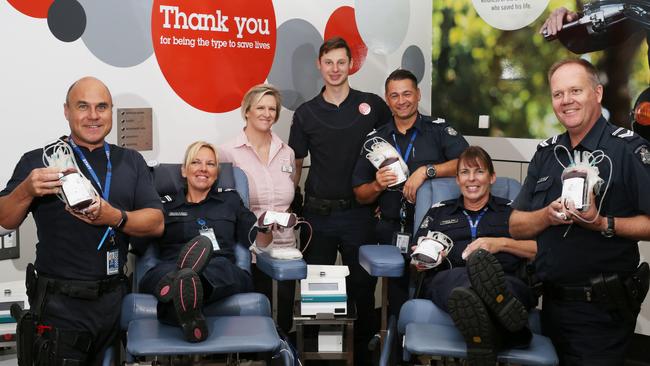Push on for supplies of local plasma to supplement imports
Australia is heavily dependent on imports from the US and EU to meet its needs for immunoglobulin stocks.

Blood plasma from US and European donors — many of whom are paid for their contributions — has become increasingly vital to the health system, despite Australia’s long-held policy of self-sufficiency through voluntary donations.
National Blood Authority figures suggest more than half of Australia’s immunoglobulin stocks soon will come from overseas, with clinical demand constantly exceeding local donor supply. In 2016-17, 44 per cent of immunoglobulin was purchased from overseas companies, with that expected to become a majority this year.
Immunoglobulin is used in different forms to treat conditions where immune replacement or immune modulation therapy is required, and also in cases of severe blood loss. Sourcing and supplying such plasma products takes up half of the NBA’s $1 billion-plus government-funded budget, with costs rising from $205.2 million to $504.6m across the past 14 years.
Federal, state and territory governments have long agreed to “promote self-sufficiency” through the NBA and the Australian Red Cross Blood Service that collects blood and plasma locally, but that has become more of an aspiration than a requirement in recent years as immunoglobulin has transformed health practices and markets around the world.
The NBA has import contracts for intravenous immunoglobulin and subcutaneous immunoglobulin with Grifols Australia and CSL Behring, which also has the exclusive plasma fractionation contract for Australian donor plasma.
A Grifols spokeswoman says plasma sourced in the US is sent to Spain to be made into the product Flebogamma for the Australian market. She says donors are required to meet stringent health criteria, with the company controlling all parts of the process and meeting Australia’s Therapeutic Goods Administration standards.
“Grifols Australia provides a plasma master file that the TGA has approved for all products supplied to Australian patients,” the Grifols spokeswoman says.
A CSL spokeswoman says plasma used to manufacture its Privigen and Hizentra products comes from donation centres in the US and the EU, with Privigen manufactured in Australia and Hizentra in Switzerland.
“Commercially sourced plasma from the US currently supplies over half of the world’s plasma requirements. Without this compensation model, the manufacturers of plasma products would not be able to secure enough plasma to produce the volumes of product required to treat people with these debilitating and life-threatening diseases,” she says.
A recent review commissioned by the Canadian government notes “growing international concern about the high global dependency on the US for the collection of source plasma” but suggests there is no evidence the “source plasma market is reaching the saturation point”. The last major plasma policy review in Australia, the 2006 Flood review, recommended CSL retain the exclusive plasma fractionation contract, despite a push from the US for it to be open to broader competition.
That review did not propose any change to the voluntary donations policy but also accepted ARCBS assurances that, with more funding and the right policy settings, Australia could be self-sufficient in plasma.
Much has changed in the past 12 years, however, and the federal Department of Health has said imports will continue to be required to satisfy demand.
The Canadian review found locally acquired plasma accounted for only 16.7 per cent of the country’s needs — much less than Australia — and, “like most of the world, we are too dependent on one jurisdiction (US) for the supply of the vital raw material used to make these products”.
“Canada needs to do more to collect plasma and take other steps to enhance our self-sufficiency in meeting the needs of our citizens for (plasma products),” the review found, adding that the only self-sufficient jurisdictions paid their donors.
While policy is a matter for governments, an ARCBS spokesman says 100 per cent of Australia’s fresh blood component needs, including fresh plasma, come from the service and its donors.
“Regarding plasma for the production of immunoglobulin treatments, we acknowledge the growth in Ig (immunoglobulin) usage, and commend governments for their response to this challenge by maintaining a diverse supply line of Ig treatments, to ensure patients have access to the treatments they need,” the ARCBS spokesman says. “The blood service has actually increased the number of plasma collections sent to CSL every year and has been able to meet targets agreed to with governments. We have recently opened two new donor centres (in Townsville and Canberra) that are focused on the collection of plasma only.
“These centres are new facilities that have opened with the approval and funding of governments, and will offer greater insight into our ability to efficiently and cost-effectively increase the volume of plasma from Australian donors into the future.”
The ARCBS and the NBA also have been working to improve efficiency through new technology that better uses donations through to new guidelines for health practitioners on the appropriate use of immunoglobulin.


